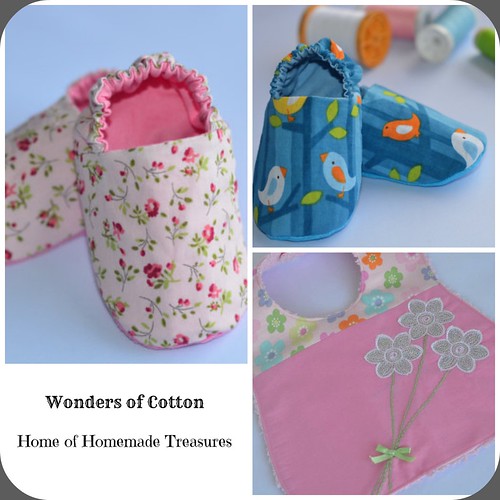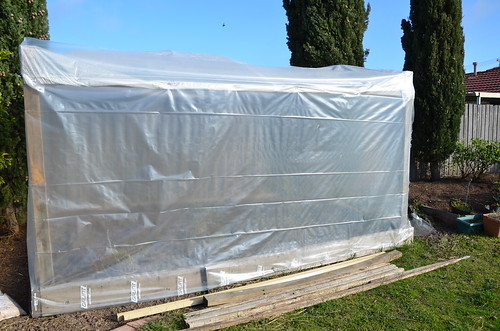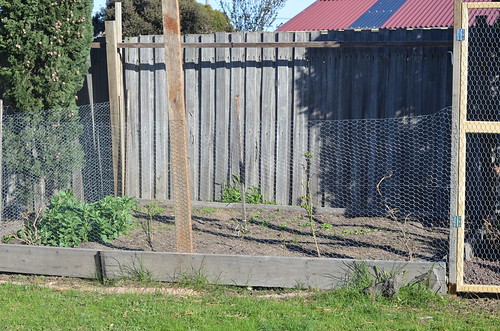 |
| Photo Credit |
Saturday, 21 September 2013
DID YOU KNOW ...? (73)
Thursday, 19 September 2013
A Word Puzzle for Beginner Readers
My son is a kindergarten student and is at the early stages of reading. He knows his alphabet, he is familiar with the sounds the letters make (phonetics) and is able to read some short words. I have recently made this puzzle for him using some of the words that he can read and we had a great time working on it together. I was more of a guidance available to him and he took the lead happily as soon as he understood the requirements of the activity. He did this just before he went to his kindergarten the other day and before he left home, he asked me if I could prepare him another one for him to work on after kinder that day. Well, this is my proof that this activity is a winner!
The list of the words in the puzzle is written on the bottom of the page. The list can be folded under or cut if you prefer your child to work on it without seeing the words/clues. However, I chose to include them and asked my son to use the list when he isn't sure what the missing letters may be. To me, it is a study skill and it worked well for my son.
Click here to access the printable puzzle as a PDF file.
The list of the words in the puzzle is written on the bottom of the page. The list can be folded under or cut if you prefer your child to work on it without seeing the words/clues. However, I chose to include them and asked my son to use the list when he isn't sure what the missing letters may be. To me, it is a study skill and it worked well for my son.
Click here to access the printable puzzle as a PDF file.
Enjoy every minute of the quality time you have with your loved ones!
Tuesday, 3 September 2013
Our First DIY Greenhouse
My initial plan was to blog about the 30 second no-sew breastfeed cover tutorial that I had promised before but unfortunately, I haven't had the time to take photos for it yet. Therefore, it is still on the waiting list. However, I have got something else for you here today.
In Australia, we have happily opened our doors to the beautiful Spring and it has been quite generous to us already. Nice sunny days have definitely warmed us inside and out. There is always something to do in the garden and when it is nice and warm, the idea of gardening is very inviting, even though we've never stopped gardening throughout the whole year, even if it meant wearing a beanie, a scarf, a pair of gumboots, a few layers under a thick jacket and some nice gloves to be able to work outdoors.
Early in winter this year, we decided to build a greenhouse over one of our garden beds, our first-ever greenhouse! It was very exciting indeed. As a family, we worked hard regardless of how harsh the weather had been at times. We achieved building our greenhouse over two afternoons.
We tried to use recycled materials whenever possible and the most unusual recycled item we used was the rods that we saved from our old blinds in the house and used them to make the rooftop frame.
The plants started growing beautifully in the greenhouse until one day, one of our gorgeous girls (chickens) found a way to get in it on a windy day! We were happy that she had a feast and was quite a content girl when we found her but unfortunately, it came with a price: bean seeds were everywhere, there was almost no lettuce left, peas were mostly hidden under big piles of soil etc. The two lessons we learned from this experience were that making a greenhouse in a place where there are strong winds, you have to be extra cautious to make it nice and strong; and that chickens don't eat broad bean plants.

Towards the end of winter, we first opened the rooftop of the greenhouse and lessened the pressure even more for windy days and a few weeks ago, we took it down altogether to get the garden beds ready for Spring.
Over a few afternoons, we made our three main vegie patches chicken-proof. The kids just loved being a part of the whole process and also playing in the dirt, of course. As for the girls (our chickens), they had a feast every time we turned the soil upside down or dug a hole on the ground. In fact, at times, it was so hard to work for us as they would not leave our sight for a second and their heads were always around our feet. We had to fight for space!
I plan to update you on the progress of our plants and trees in time as well as posting on other topics. Until my next post, make the most of the nature you are in regardless of the season you have there!
In Australia, we have happily opened our doors to the beautiful Spring and it has been quite generous to us already. Nice sunny days have definitely warmed us inside and out. There is always something to do in the garden and when it is nice and warm, the idea of gardening is very inviting, even though we've never stopped gardening throughout the whole year, even if it meant wearing a beanie, a scarf, a pair of gumboots, a few layers under a thick jacket and some nice gloves to be able to work outdoors.
We tried to use recycled materials whenever possible and the most unusual recycled item we used was the rods that we saved from our old blinds in the house and used them to make the rooftop frame.
When we completed our greenhouse, we were very satisfied. However, soon after we noticed that it was too early to be happy as we started having many days with strong winds and the greenhouse had too much pressure in it. Some parts of it came undone and we had to find a solution to it. Our solution idea came from Mr. Hubby. As he suggested, we made several little so-called 'windows' on most sides of it and we used some strong tape to secure the ends of the cuts to make sure they would not keep ripping with strong winds. It seemed to be working well even though it was still not the ideal greenhouse. We also put some extra poles to support the frame and the plastic cover better.
We planted some broad beans, peas, beans, lettuce mix and silver beet in it. However, soon we recognised that the silverbeet seeds were something else and to this date, we still don't know what they are. We have to be a bit more patient before we can make anything out of it. Hopefully it is something edible at least!
The plants started growing beautifully in the greenhouse until one day, one of our gorgeous girls (chickens) found a way to get in it on a windy day! We were happy that she had a feast and was quite a content girl when we found her but unfortunately, it came with a price: bean seeds were everywhere, there was almost no lettuce left, peas were mostly hidden under big piles of soil etc. The two lessons we learned from this experience were that making a greenhouse in a place where there are strong winds, you have to be extra cautious to make it nice and strong; and that chickens don't eat broad bean plants.

Towards the end of winter, we first opened the rooftop of the greenhouse and lessened the pressure even more for windy days and a few weeks ago, we took it down altogether to get the garden beds ready for Spring.
Over a few afternoons, we made our three main vegie patches chicken-proof. The kids just loved being a part of the whole process and also playing in the dirt, of course. As for the girls (our chickens), they had a feast every time we turned the soil upside down or dug a hole on the ground. In fact, at times, it was so hard to work for us as they would not leave our sight for a second and their heads were always around our feet. We had to fight for space!
Sunday, 1 September 2013
DID YOU KNOW ...? (72)
Crickets's ears are located just below their knees on their front legs.
 |
| Photo Credit |
Friday, 16 August 2013
Cotton: Nature's Wonder Fiber
Recently, a mother of a young boy with eczema was in desperate need for some tips and recommendations from other parents with similar experiences on a social media group that I am a part of. In her post, she told us that she had already made an appointment with her son's paediatrician but she felt awful just sitting at home and waiting for the appointment day to come that was in a few days while watching her baby in discomfort and pain. This post is not exactly about eczema but that post of hers has inspired me to write about one aspect of our choices as individuals, parents, consumers and makers; fabrics.
Whenever we need to choose some clothing for our kids, we pay extra attention to use natural fibers, such as cotton. Our now-almost-5-year-old son suffers from a mild case of eczema and we were reminded by his doctor at the time to use %100 cotton wherever and whenever possible even for his bedsheets at the time as synthetic fabrics and wool can irritate but it has always been our preference even before then.
I almost always use only 100% cotton fabrics for main fabrics for my kids and at my shop as I believe in cotton because it is natural and I am a believer of 'goodness comes from nature'. Cotton is a natural fiber that comes from the seedpod of the cotton plant and is used to make many fabric types. It is used for virtually every type of clothing; you name it, it has it. However, as it is stated here, most of its
apparel usage is for men and boys’ clothing.
Cotton fiber has been cultivated for more than 8,000 years. Cotton accounts for 40% of the world's fiber production and generates a $40 billion a year textile market according to this source. It is mentioned by the same source that approximately 80% of the cotton farms are small, and many are family owned.
It is stated here that no other fiber comes close to duplicating all of the desirable characteristics combined in cotton. Cotton can be woven or knit into cloth.
%100 cotton fabrics are breathable. They do not trap the air and allow the skin to breathe. They are smooth and cool which is important for the prevention of overheating. Cotton is very absorbent therefore, it will absorb moist and sweat easily (it evaporates; releases the moist on the surface of the fabric) In fact, as it is claimed here, it absorbs up to 27 times its own weight in water. It is non-irritating. Regardless of the heat or the humidity, cotton fabrics feel good against the skin. Cotton is comfortable. Unlike some synthetic fabrics, cotton fabrics do not rub against the skin, which is bad for eczema as well.
Additionally, cotton is easy to clean. It can be laundered or dry-cleaned (just be wary of the colours and other chemicals that may be added to certain cotton fabrics though). As a general rule, cotton can be boiled, therefore sterilised. As a fabric, cotton is normally durable and strong.
Last but not least, here are some great tips by sewing.org on how to look for a good quality cotton fabric for you:
- look for closely woven fabric with long, 1/2"fibers and even yarns.
- Scrape the fabric with your finger nail, if the threads separate, the fabric won’t wear well.
- To check the fiber length, pull a thread from the fabric and untwist it; if the fibers are at least 1/2"long, the fabric will wear well.
- Rub two fabric scraps together to see if the fabric pills.
- To check for colorfastness, rub the colored fabric with a piece of white fabric; no dye should come off on the white fabric.
Enjoy something natural today!
 |
| Photo Credit |
I almost always use only 100% cotton fabrics for main fabrics for my kids and at my shop as I believe in cotton because it is natural and I am a believer of 'goodness comes from nature'. Cotton is a natural fiber that comes from the seedpod of the cotton plant and is used to make many fabric types. It is used for virtually every type of clothing; you name it, it has it. However, as it is stated here, most of its
apparel usage is for men and boys’ clothing.
 |
| some cotton products by MADE BY Y |
It is stated here that no other fiber comes close to duplicating all of the desirable characteristics combined in cotton. Cotton can be woven or knit into cloth.
%100 cotton fabrics are breathable. They do not trap the air and allow the skin to breathe. They are smooth and cool which is important for the prevention of overheating. Cotton is very absorbent therefore, it will absorb moist and sweat easily (it evaporates; releases the moist on the surface of the fabric) In fact, as it is claimed here, it absorbs up to 27 times its own weight in water. It is non-irritating. Regardless of the heat or the humidity, cotton fabrics feel good against the skin. Cotton is comfortable. Unlike some synthetic fabrics, cotton fabrics do not rub against the skin, which is bad for eczema as well.
Additionally, cotton is easy to clean. It can be laundered or dry-cleaned (just be wary of the colours and other chemicals that may be added to certain cotton fabrics though). As a general rule, cotton can be boiled, therefore sterilised. As a fabric, cotton is normally durable and strong.
Last but not least, here are some great tips by sewing.org on how to look for a good quality cotton fabric for you:
- look for closely woven fabric with long, 1/2"fibers and even yarns.
- Scrape the fabric with your finger nail, if the threads separate, the fabric won’t wear well.
- To check the fiber length, pull a thread from the fabric and untwist it; if the fibers are at least 1/2"long, the fabric will wear well.
- Rub two fabric scraps together to see if the fabric pills.
- To check for colorfastness, rub the colored fabric with a piece of white fabric; no dye should come off on the white fabric.
Enjoy something natural today!
Saturday, 10 August 2013
TIP: How To Prevent Cut Fruit from Discolouring
 |
| Photo Credit |
Saturday, 27 July 2013
DID YOU KNOW ...? (71)
A school that had only five students when it was first established in 1959 now holds the world record of the largest school in terms of pupils. According to a news article, Guinness Book of Records has Lucknow City Montessori School in India as the world's biggest school with 39,437 students in 1,000 classrooms in the academic year of 2010-2011. However, it is claimed by the school's website that the school now has over 47,000 students.
 |
| Photo Credit |
Subscribe to:
Posts (Atom)













